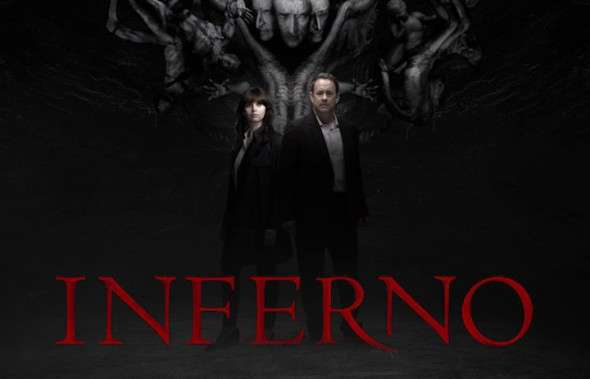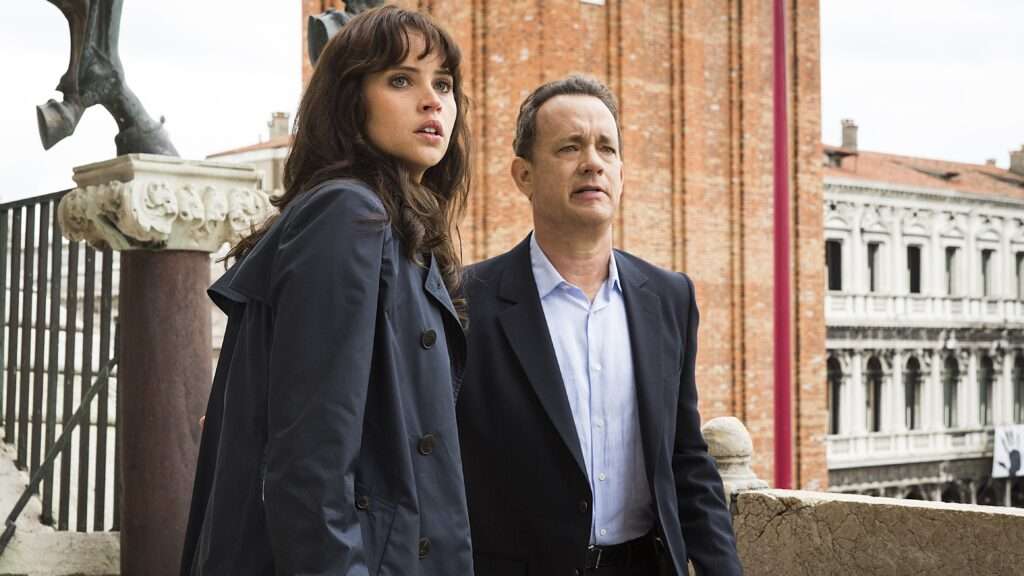Inferno (2016), directed by Ron Howard and based on the bestselling novel by Dan Brown, is the third installment in the cinematic adaptation of Brown’s Robert Langdon series, following The Da Vinci Code (2006) and Angels & Demons (2009). While Inferno may hold appeal for fans of the previous films and those drawn to cerebral thrillers, it ultimately feels like a film that has lost the spark of its predecessors. With a convoluted plot, uneven pacing, and a somewhat lackluster execution, the film struggles to fully live up to the expectations set by its predecessors. Nonetheless, it has its merits, especially for viewers who appreciate historical puzzles and globe-trotting mysteries.
The Plot: A Familia Formula
As with the other films in the series, Inferno centers on Harvard professor Robert Langdon (played once again by Tom Hanks), who finds himself in the midst of a complex conspiracy. This time, Langdon wakes up in a hospital in Florence, Italy, with no memory of the last few days. He is quickly thrust into a race against time as he teams up with Dr. Sienna Brooks (Felicity Jones), a British physician, to solve a mystery surrounding Dante Alighieri’s Divine Comedy.
The story is centered on a global health crisis caused by a bioterrorist plot to unleash a virus that would drastically reduce the world’s population. The source of this plot is a mysterious figure, Bertrand Zobrist (Ben Foster), a billionaire geneticist obsessed with the writings of Dante and a belief that overpopulation is the world’s greatest threat. The twist in this installment comes with the notion that Zobrist has encoded the location of a weaponized virus within a puzzle based on Dante’s famous work. Langdon and Sienna must solve this puzzle before the virus is unleashed, and to do so, they must race across Florence, Venice, and Istanbul, uncovering clues hidden in Renaissance art, ancient texts, and hidden locations.

At its core, the plot of Inferno plays to the strengths of the Robert Langdon series—a combination of art history, literature, and puzzles—but it feels somewhat predictable and derivative. As in the previous films, the action sequences and globetrotting nature of the adventure are mixed with intellectual riddles, but this time, the puzzle-solving elements seem a bit more forced than in the past. It lacks the intellectual tension and historical intrigue that made The Da Vinci Code particularly compelling.
The Performances: Hanks and Jones Keep it Afloat
Tom Hanks is once again excellent as Robert Langdon, bringing his trademark gravitas and likability to the role. Langdon is meant to be an intellectual hero, and Hanks’ performance reinforces the character’s calm, collected demeanor even when things around him spiral out of control. Hanks is able to lend a certain amount of credibility to even the film’s more implausible moments, keeping the character grounded in a way that makes the audience want to follow him through the labyrinthine plot.
Felicity Jones, playing Dr. Sienna Brooks, does a solid job as Langdon’s companion. While she doesn’t necessarily bring a lot of depth to her character, Jones’ portrayal of Sienna is competent and dynamic enough to keep the action moving forward. The chemistry between her and Hanks is serviceable, though it lacks the spark seen in other cinematic partnerships.

The supporting cast, including Irrfan Khan (as Harry Sims, a mysterious figure from the World Health Organization) and Sidse Babett Knudsen (as the determined WHO official, Dr. Elizabeth Sinskey), provide decent performances, though they often feel like they are just following along with the action rather than driving it forward. Ben Foster’s role as Bertrand Zobrist, the villainous genius behind the bioterrorism plot, is underwhelming. While his character has potential, he never feels fully fleshed out or menacing, and as a result, the film’s antagonist lacks the gravitas required to make the stakes feel truly dire.
The Direction: A Formulaic Thrill Ride
Ron Howard’s direction in Inferno is competent but uninspired. While the film features some beautiful cinematography showcasing iconic European locations like Florence, Venice, and Istanbul, these settings are often underutilized. The film’s pacing fluctuates wildly—there are long stretches of exposition-filled dialogue that bog down the action, while the film frequently switches between chaotic action scenes and puzzling historical analysis. The movie is trying to balance so many elements, but often, it feels like it is pulling the viewer in too many directions.
The action scenes, which are intended to maintain a sense of urgency, feel forced at times. There’s a sense that the film is trying too hard to be thrilling, especially with its chase sequences and momentary bursts of intensity. However, these moments often feel hollow because the film doesn’t fully commit to its own stakes. For example, a car chase through the streets of Florence feels more like a set piece inserted into the plot for spectacle rather than a necessary part of the narrative.
While the previous Langdon films were focused on a specific historical theme or event, Inferno feels like it’s trying to mix too many different ideas into one narrative. The historical depth that made The Da Vinci Code such a gripping experience is nowhere to be found here, and instead, the film substitutes its intellectual engagement with a reliance on action, which only diminishes the intrigue of the story.
The Themes: Bioethics and Overpopulation
The central theme of Inferno revolves around the issue of overpopulation and the potential consequences of human population growth on the environment. Bertrand Zobrist’s plan to unleash a virus as a solution to the overpopulation crisis is a reflection of current concerns about ecological sustainability, and the film explores the ethical dilemma surrounding bioengineering and bioterrorism. However, this theme is introduced in a heavy-handed manner, with little room for deeper exploration or philosophical reflection. The film tends to treat complex issues with a surface-level analysis, making it hard to take the ethical questions seriously.

The film attempts to grapple with the duality of science and morality, but it doesn’t quite deliver a satisfying conclusion. Instead, the ending feels rushed and a bit contrived, leaving the audience with more questions than answers.
The Verdict: A Flawed, But Entertaining Thriller
Inferno ultimately feels like a missed opportunity. The intellectual puzzles that once made Dan Brown’s novels so compelling are present, but they are not as intricate or satisfying as in The Da Vinci Code or Angels & Demons. While Tom Hanks gives a solid performance, the plot falters under its convoluted structure, and the film’s action-heavy sequences often detract from the intellectual mystery at the heart of the story.
If you’re a fan of the previous Langdon films or enjoy thrillers that blend history, puzzles, and high-stakes action, Inferno will likely provide enough entertainment to keep you engaged for the duration. However, for those hoping for a more thoughtful and well-executed narrative, Inferno falls short of expectations. It’s a fun ride, but it’s one that ultimately leaves you feeling like something is missing—whether it’s the excitement, depth, or historical richness that made the first two films so memorable.





